If you are just tuning in, check out our past newsletters to catch up on our adventure of finding, buying, and restoring a 200-year-old home in Montalcino.
On the Homestretch
We can hardly believe we’re saying this, but we’re on the homestretch.
The electrical and plumbing rough-ins are done. The terracotta floors have been laid and grouted. The walls - at least the ones that we are not leaving in exposed rock - are ready to be painted. The staircase will be installed next week. The windows and doors are on track to arrive by early June. Enel, the electrical company, stopped by to increase our electrical supply.
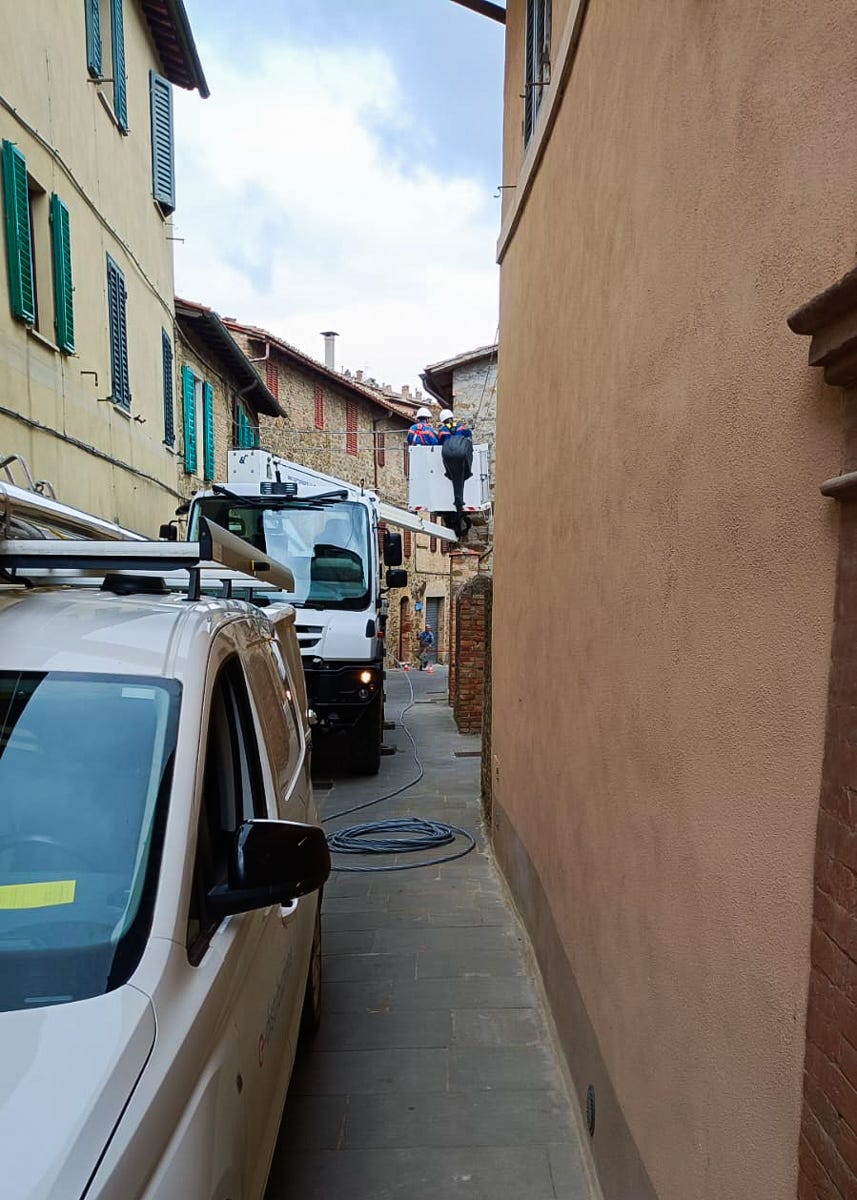
Now, it’s time to tackle the kitchen and the bathrooms. And finalize a plan for the dining room ceiling.
La Cucina
Buying a kitchen in Italy has been a learning experience. Kitchens are typically sold as complete packages—including cabinets, countertops, sink, faucet, and appliances—all from a single vendor for one all-inclusive price.
Most vendors pushed offerte, special pricing for kitchens that included quartz countertops and consumer-friendly appliance packages. When we asked about customizations, natural stone tops, and other brands of appliances, the salespeople tried to talk us out of it, reminding us that we would forego the offerta, or simply telling us that it was not an option.
Call us impractical, but we prefer local, natural materials when possible. It seems silly to import a quartz countertop made in a factory in Spain or a slab of Brazilian quartzite all the way to Montalcino, when there are Italian marble quarries a few hours away.
And, Stefano and I are more than half a century old. This is likely the last new kitchen we will have in this lifetime. We love to cook, and the kitchen is our happy place. We want this kitchen to be nice and to last.
We found a local, custom cabinet company just thirty minutes away from Montalcino and stopped by to check it out. We struck gold. Our salesperson, Luca, proved industrious and creative. He tracked down reps and requested quotes for elettrodomestici (appliances) until we settled on the ones we like best. He offered solutions to our unique requests, such as hidden outlet strips underneath the upper cabinets. He connected us to a local marmista so that we could visit their warehouse and view slabs of marble and natural stone in person.
Dozens of emails, multiple early morning WhatsApp calls, and several in-person visits later, our kitchen is ready to go into production. We selected modern, flat-panel cabinets with opaque blue glass doors and drawers, sleek appliances in antracite with copper accents, and an Italian marble called Fior di Pesco (Peach Blossom Flowers) for the countertop, backsplash, and double-waterfall island top.
We’re especially excited about our stone. Fior di Pesco has the colors and dramatic veining we were seeking, and as a bonus, its name reminds us of the Lucio Battisti song, Fiori Rosa, Fiori di Pesco.
Aspettiamo che arrivi.
Serena, our sales rep at the tile and bath shop, emailed us recently to inform us that our bathroom piastrelle (tile), rubinetteria (faucets and shower trim), and sanitari (toilets and bidets) are in.
We’ve been on the fence about the bathrooms since day one. The tile we selected is not the easiest to install. And, because they are large-format, it will be expensive to replace a tile if one breaks while being cut.
We considered inviting our friend and Stefano’s long-time colleague, Nafid, on an all-expense-paid trip to Montalcino to help us install them ourselves. Nafid is awaiting knee replacement surgery, though, and even if Stefano offered to be the one down on his hands and knees, navigating the trans-Atlantic flight and the hills of Montalcino isn’t an option right now.
So, Stefano offered to return to Montalcino and work side-by-side with our contractors to finish the bathrooms. Surprisingly, they agreed.
Here in the US, if a client asks to work alongside us on a home remodeling project, we tell them they can do the demo before we arrive on site, and they can do finishing work, such as painting, after we leave the job site. But, citing liability concerns, we do not permit homeowners to work with us on the job.
In Italy, they simply said, “Va bene! Allora, aspettiamo che arrivi.” We’ll wait for you to arrive.
Wine Barrel Ceilings
A few newsletters back, we wrote about the ceilings in the garden-level kitchen and dining room. Unlike upstairs, these do not have the pretty terra cotta tile and old chestnut beams. Instead, cement support beams called travetti, spaced about two feet apart, travel the length of the ceiling.
Our contractors filled the gaps in the kitchen by creating volticelle, a series of small barrel vaults trimmed in terra cotta tile. For the dining room, which will also house Stefano’s wine cellar, Stefano told me, “ho un’idea.”
His idea was to create a ceiling made from the boards, or staves, as they are technically called, of old wine barrels.
“Mi garba!” said Gabriele, our geometra. He liked the idea and even tracked down an old wine barrel so that Stefano could try it out when we were there in April. The staves were just the right length to fit between the cement beams.
Back home in Minneapolis, Stefano set out to find some used wine barrels, or botti as they are called in Italian. His friend Stefano from Fossacolle winery in Montalcino didn’t have any. Neither did Elena of Cerbaia, whom we bought our house from. After checking around a few other Brunello wineries and coming up empty-handed, Stefano reached out to his friend Paolo of Ethica Wines.
Paolo is based in California, but has relationships with wineries all over Italy. He’s also a great guy. Not surprisingly, Paolo got back to us quickly. “Ti ho trovato delle botti!” He found us some wine barrels. They were from Cafaggio, producers of Chianti Classico DOCG.
Stefano told our contractor, Massimiliano, that he’d found the botti, but that they were from Chianti, not Brunello. Massimiliano smiled and said, “non lo diciamo a nessuno.” We won’t tell anyone.
I need to buy some tools…
Stefano, who can’t wait to jump into his work clothes and help put the finishing touches on our house, looked at me solemly and said, “I’m going to need to buy some tools and equipment.”
Just what we need, I thought. More tools. But we can’t exactly check a table saw with our luggage, so I told him to buy whatever he needs.
He went online and began ordering items to be sent to his mom’s house in Rome: a work bench, a mitre saw that converts to a table saw, a wood milling cutter, levels in three different sizes, wood clamps, and who knows what else.
His mom calls us, excitement in her voice, each time a new package arrives. “Dove mettete tutte queste cose, però?" she asks. Where are we going to keep all of these things?
Where, indeed…


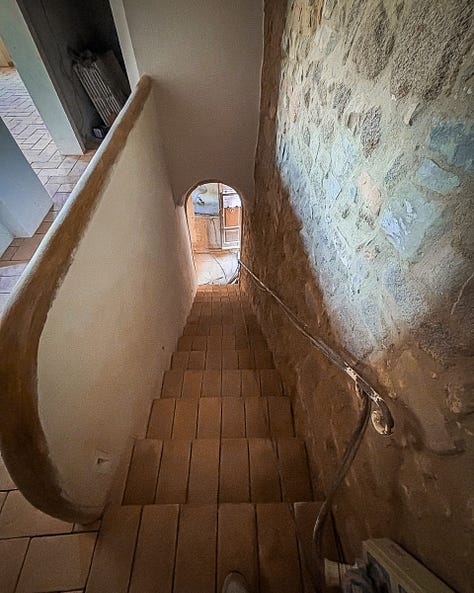
About Montalcino
Montalcino is a medieval town of approximately 6,000 residents, located about 25 miles south of Siena, 85 miles south of Florence, and 145 miles north of Rome. Perched on a hill in the heart of the world-class Brunello di Montalcino wine-producing region, Montalcino has scenic views of the olive groves and vineyards of the surrounding countryside. Visitors come from all over the world to enjoy the town’s cultural events and to experience its wine tourism. It’s long been one of our favorite places to visit.


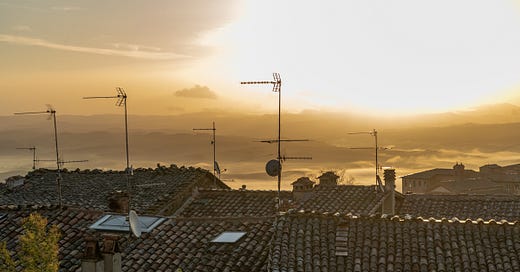




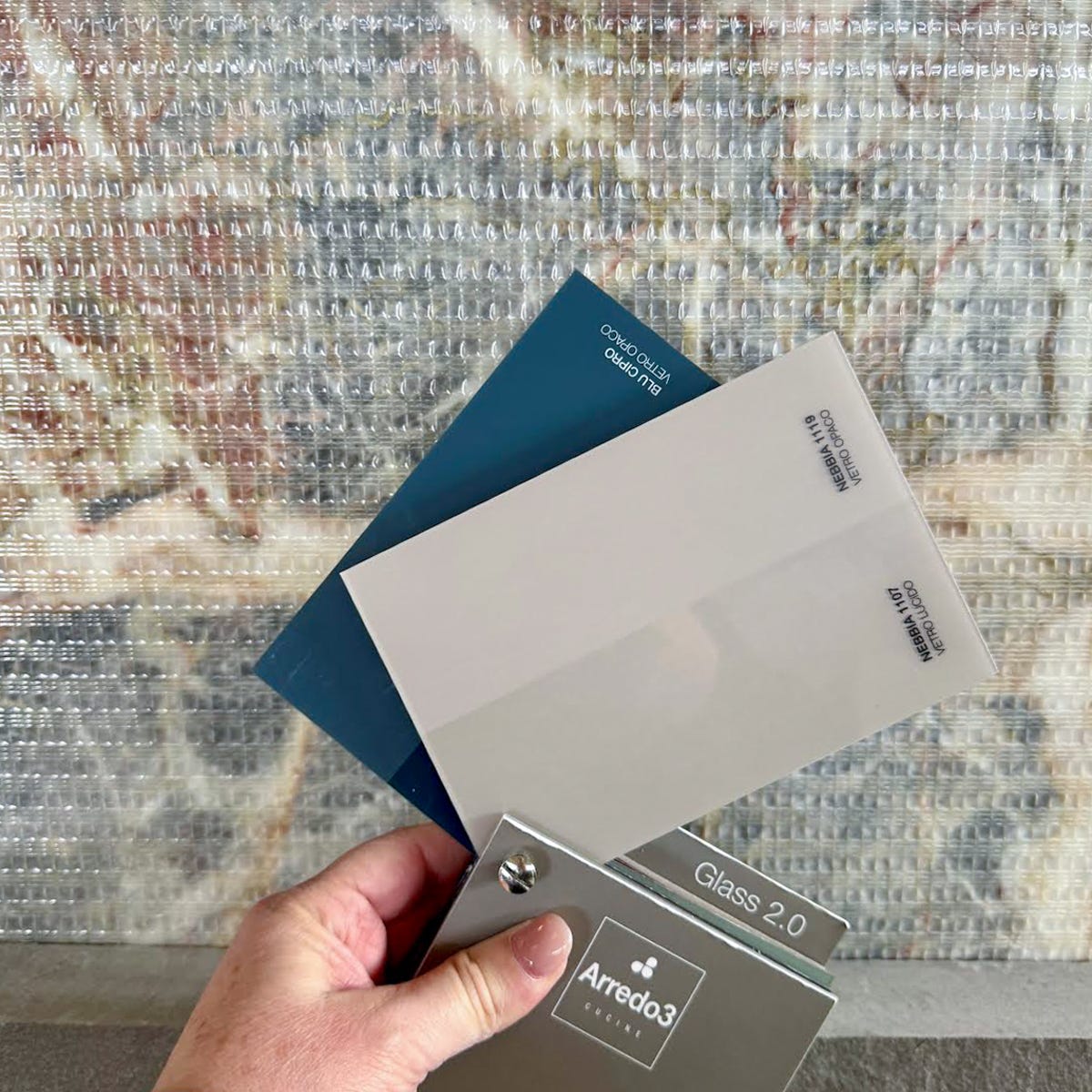
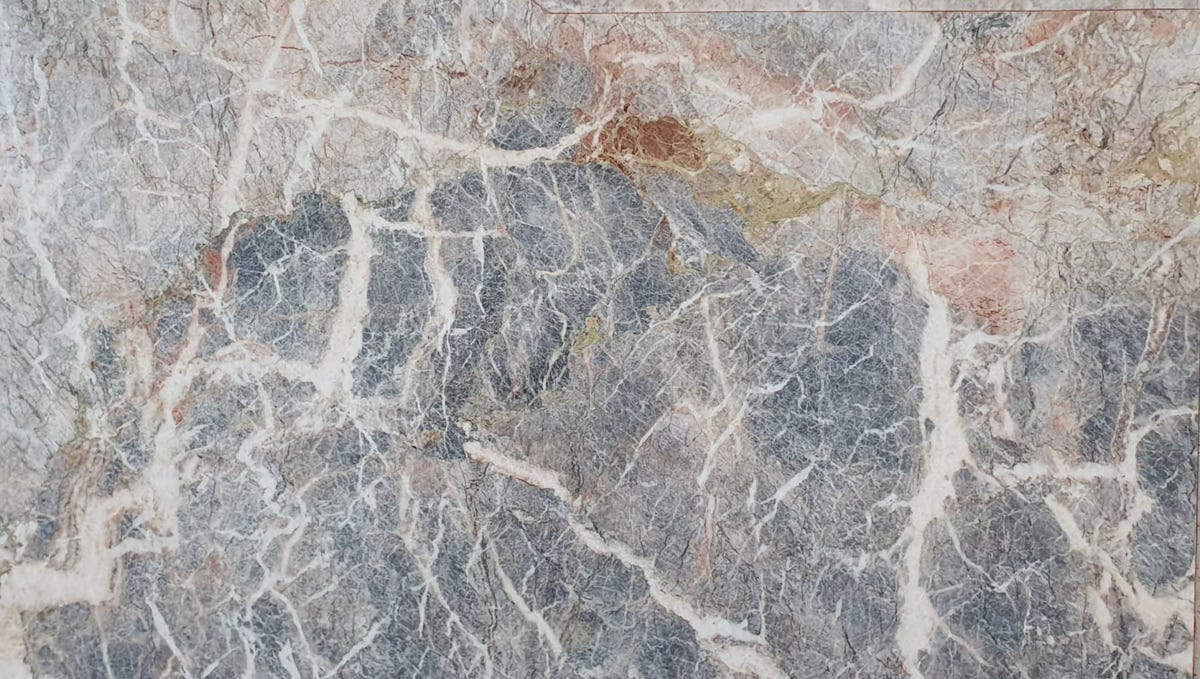
I know that renovating is anything but romantic, but I can't help but feel like I've entered this beautiful little daydream when I read this.
Will visit Siena for 1 week in October… so looking forward to walking Montalcino…. Hope to find u there!🙏